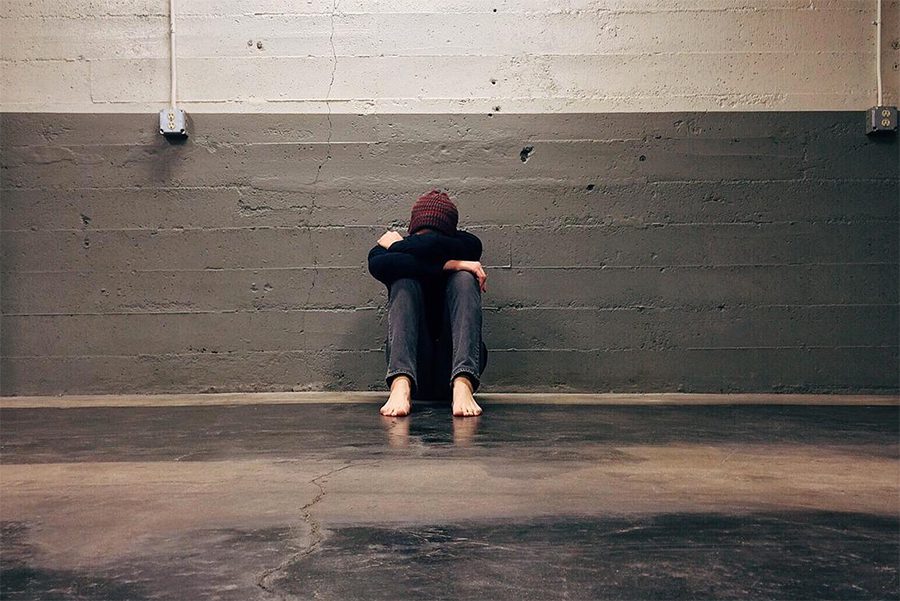Statistics say that over 36.5% of internet users have experienced cyberbullying at some point in their lives.
As the internet gave us access to everyone, it also gave everyone access to us. And that’s a problem because we can’t know for sure that everyone who has access to us comes with good intentions.
Since the internet gives people a degree of anonymity, it reduces the fear of getting caught, enabling many to act in an uncivilized manner. And the consequences of that are often saddening.
Kristina Dukic’s (Kika) case is an example of that. Kristina was a 21-year-old Serbian YouTuber and a social media influencer who ended her life on December 8, 2021.
Reports say that she took her own life after being bombarded with hateful messages on social media. And a string of her social media posts suggests that she had been battling cyberbullying for several years.
As saddening as Kristina’s case is, it’s not the only one. Every day, millions of people become victims of cyberbullying, which severely affects their physical, mental, psychological, and emotional wellbeing.
This post aims to familiarize you with the gravity of this problem in the modern world and possibly equip you with things you can do to prevent this from happening to you and your loved ones. So, let’s begin.
What is Cyberbullying?
Cyberbullying basically refers to the act of using digital technology to harm other people. Cyberbullies typically use the anonymity of the internet to humiliate, harass, or mentally torture their victims. However, cyberbullying can also take place through other forms of communication, like text messages.
The Many Types of Cyberbullying
Cyberbullying comes in many forms and with different intensities. Have a look.
Harassment
Harassment is a broad category, and many types of cyberbullying fall under it. But generally, it refers to the constant and sustained pattern of threatening or hurtful online messages written with the intention of putting the other person in a dominated or submissive mental state.
PEN America prefers the term “online harassment or online abuse” and defines it as “pervasive or severe targeting of an individual or group online through harmful behavior.”
Doxing
Doxing (sometimes spelled “doxxing”), also commonly known as outing, describes the act of revealing someone’s sensitive and personal information without their consent.
In most cases, doxing is performed with the intention to publicly humiliate or embarrass an individual.
This act can range from spreading personal documents or photos to spreading an individual’s saved private messages. In most cases, these non-consented contents are distributed in private online groups, but sometimes they can be shared publicly.
Cyberstalking
Cyberstalking is basically a digital version of real-world stalking, and it’s potentially a crime in the United States.
This version of cyberbullying can take the form of text messages, social media posts, emails, and more. And it’s often deliberate, persistent, and methodical.
In most cases, the perpetrator doesn’t stop the interaction even when the recipient expresses extreme displeasure or even when they ask the cyber-stalker to stop. The content they send is often disturbing and inappropriate, leaving the recipient distressed, anxious, fearful, and worried.
Dissing
Dissing is similar to doxing (see above). However, doxing is, in most cases, targeted at celebrities and famous figures.
On the other hand, dissing is on a lower level, potentially in the same social group.
It refers to the act of spreading cruel information about their target through private messages and public posts. In most cases, the bully tends to have a personal relationship with the victim, either as an acquaintance or a friend.
Cyber Flashing
Cyber flashing is a form of sexual harassment that’s unfortunately quite common on social media. In this form of harassment, the sender sends an unsolicited sexual or pornographic image without the receiver’s consent. These messages usually contain pictures of one’s genitalia or other sexually explicit images.
Statistics say that a fifth of young women and girls were “cyber-flashed” in the past year.
On February 2022, England and Wales included cyber flashing in their list of sexual offenses. The law mentions that cyber-flashing, including the non-consensual sending of pictures of one’s private parts, could be criminalized according to the Sexual Offences Act 2003. Besides that, the sender will also be registered on the sex offenders’ list.
Cyber flashing is already illegal in Scotland.
The United States is also picking up the pace, as two states—Texas and California—have already introduced cyber flashing laws.
Texas considers cyber flashing a class C misdemeanor, carrying fines of up to $500. The states passed this law in 2019 with the support of Bumble (a popular online dating app).
Recently in 2022, the state of California also passed a bill that allows cyber flashing victims to sue if the perpetrator is over 18. Besides that, the victim can also request a court order to block future communications.
And more…
These are just a few of the many types of cyberbullying. There are more, including trolling, fraping, masquerading, flaming, trickery, and exclusion. And all of these have one thing in common— they’re devastating for the victims’ physical, mental, emotional, and psychological health. Let’s take a look at how.
Emotional Effects
It’s not surprising to learn that cyberbullying is one of the most significant stressors in young people’s lives. Research studies have shown that people who have been a victim of cyberbullying report symptoms of chronic stress.
In addition to feeling distressed, psychological experts say that they may also feel hurt or embarrassed, or even fear for their safety.
On top of that, many youngsters have been known to blame themselves for their cyberbullying incidents. This may cause:
Isolation
Victims of cyberbullying often desire to be isolated and alone. And this is counterproductive because friends and companions are one thing that can help them cope with the mental effects of the incidents they’re going through.
This is particularly bad when the victim is of a younger age. Because their parents can’t be with them most of the time they interact with the world, having friends is what protects them from such problems.
Isolation can also create a downward spiral. Because the person is isolated, it’s harder for them to make friends, which also makes them weaker and a bigger target for the bullies. And this can result in more bullying.
Many parents tend to act hastily when they find out their child has been cyberbullied, shutting down their cell phones and computers. But though this may help keep bullies away, it’s also shutting down the child’s connection with the outer world. And that can make them feel more secluded.
Anger
Acting in anger is one of the most common ways cyberbullying victims release their emotions. Some may plot revenge and go as far as to engage in retaliation. And this approach is extremely dangerous because it can keep them locked in the bully-victim cycle.
Powerlessness
Most of the time, it’s hard for the victims of cyberbullying to feel safe. They may feel powerless and vulnerable.
Typically, these emotions surface because of the knowledge that the bullies can invade their privacy anytime through their computer or a cell phone. So, they have no place to escape to.
Victims can feel like their bullies are everywhere and can attack them at any point. This can also lead to intense paranoia combined with the feeling of powerlessness.
In addition, since the internet gives the bullies a degree of anonymity, it can induce more fear in the victim.
While it’s often the case that a victim doesn’t know who their cyberbully is, sometimes a bully will choose to attack someone they know. They may have no problem with being identified, or even enjoy the feeling that they may be seen as a powerful figure.
Mental Effects
Experts say that individuals who are cyberbullied often succumb to mental health problems like depression, anxiety, and chronic stress.
This can erode their feelings of self-worth and self-confidence, accelerating their condition further.
Besides that, cyberbullying often zeros in on the things the victim already feels insecure about. For example, their weight, height, facial structures, skin color, etc.
This can heavily affect their self-esteem, causing them to doubt their own worth and leading to the feeling of intense dissatisfaction with who they are.
As I have mentioned many times on this website, humans are social animals, and we have the primal need to be part of a social group where we’re accepted, liked, and respected. When this doesn’t happen, it can result in reduced well-being, psychological maladjustment, and ultimately low self-esteem.
Behavioral Effects of Cyberbullying
Victims of psychological cyber-attacks often display major behavioral changes similar to people who are bullied in traditional ways.
If cyberbullying goes on for a long time, it can induce more significant changes in a person. Here are a few examples.
Substance and Alcohol Abuse
Experts say that people who are harassed online are more likely to engage in substance and alcohol abuse, as it gives them a safe space where they don’t have to engage with their feelings.
One study found that targets of cyberbullying are 2.5 times more likely to engage in binge drinking or marijuana use than their peers.
Carrying a Weapon
Studies have found that people who are cyberbullied are more likely to carry weapons that they may acquire through legal or even illegal means.
Even more concerning is the fact that kids are likely to bring illegal weapons to school as protection if they’re cyberbullied.
Physical Effects of Cyberbullying
The effects of cyberbullying aren’t just limited to mental, emotional, or behavioral changes. After some time, they can manifest as real physical problems that may need medical attention.
Sleep disturbances, gastrointestinal issues, and disordered eating are some of the physical effects that follow incidents of cyberbullying.
If you have a child and you’re noticing sudden changes in their sleeping or eating habits, this may be a sign that you need to speak with your child’s doctor immediately. The doctor can then evaluate thoroughly and point you in the right direction.
How to Prevent Cyberbullying?
Preventing cyberbullying isn’t easy, as the internet is open for all. But the good thing is, it’s also not impossible. If you’re a victim or think your child or someone you know is suffering from this problem, here are some things that may help.
Report Cyberbullies
If you or someone you know is being cyberbullied right now, here are some of the actions you can take, according to StopBullying.gov.
- Report to online service providers
- Notify law enforcement
- If it’s a child being bullied, let their school authority know.
I highly recommend you visit this article by StopBullying.gov, which has in-depth information on the actions one can take if they’re in this situation.
Now, even if you’re not being bullied on the internet, there are a few precautions you can take to ensure that this kind of situation doesn’t arise. Have a look.
Protect Accounts and Devices
Most social sites like Twitter, Instagram, Snapchat, TikTok, and Facebook offer a privacy setting. You can lock your profile and only let the people you know follow your account. If you have a child, make sure that they know about this setting.
You can even go through their accounts for them and turn on their privacy settings.
This will ensure that people will require permission before doing anything related to the account, like tagging photos, commenting, and following.
Keep Personal Stuff Private
Never share your email address, phone number, home address, or such details online. And even if you are talking with someone for quite a while, be very careful about what you share with them.
Manage Location Sharing
Applications like Facebook allows user location-sharing. This means that once you turn this on, your friends will know where you are at any given moment. You can opt to turn this setting off for strangers on your followers or friend list.
Similarly, some smartphones geotag the photos you take on them, which lets the application know and share where you took that picture. So, be very mindful about the images you share online.
Also unrelated, but a helpful tip for while you’re on vacation: Wait till you get back home to share the pictures, so by the time people will know you weren’t home, you’ll already be back. This prevents a lot of break-ins and harmful activities.
Log Out When Using Public Devices
After using a public device, like at your school or a library, make sure to log off all your accounts. Simply closing the tabs isn’t enough. You need to ensure that you’re logging out of your email, social media accounts, or any other account that may be open.
One good tip while using public devices is to use incognito mode. This will ensure that none of your data gets saved. So, once you close the browser, everything you do on that public device will disappear.
Final Thoughts
“Cyberbullying is not a spectator sport. When and if you see it happening resist, stay informed and aware of how you can help, and take some steps to champion against it.”
Germany Kent
Although modern technology is our best friend today, it can also be the primary cause for people to develop several physical, mental, emotional, and psychological health problems.
And although the first instinct would be to get rid of the medium, cutting tech from our lives isn’t feasible given how big a role it plays. One thing that will help you tackle this problem without giving up the convenience of your devices is to build a healthier relationship with technology.
The Healthier Tech Podcast from SYB is designed to help you learn how to use technology in a safer, healthier way. So, give it a listen.












